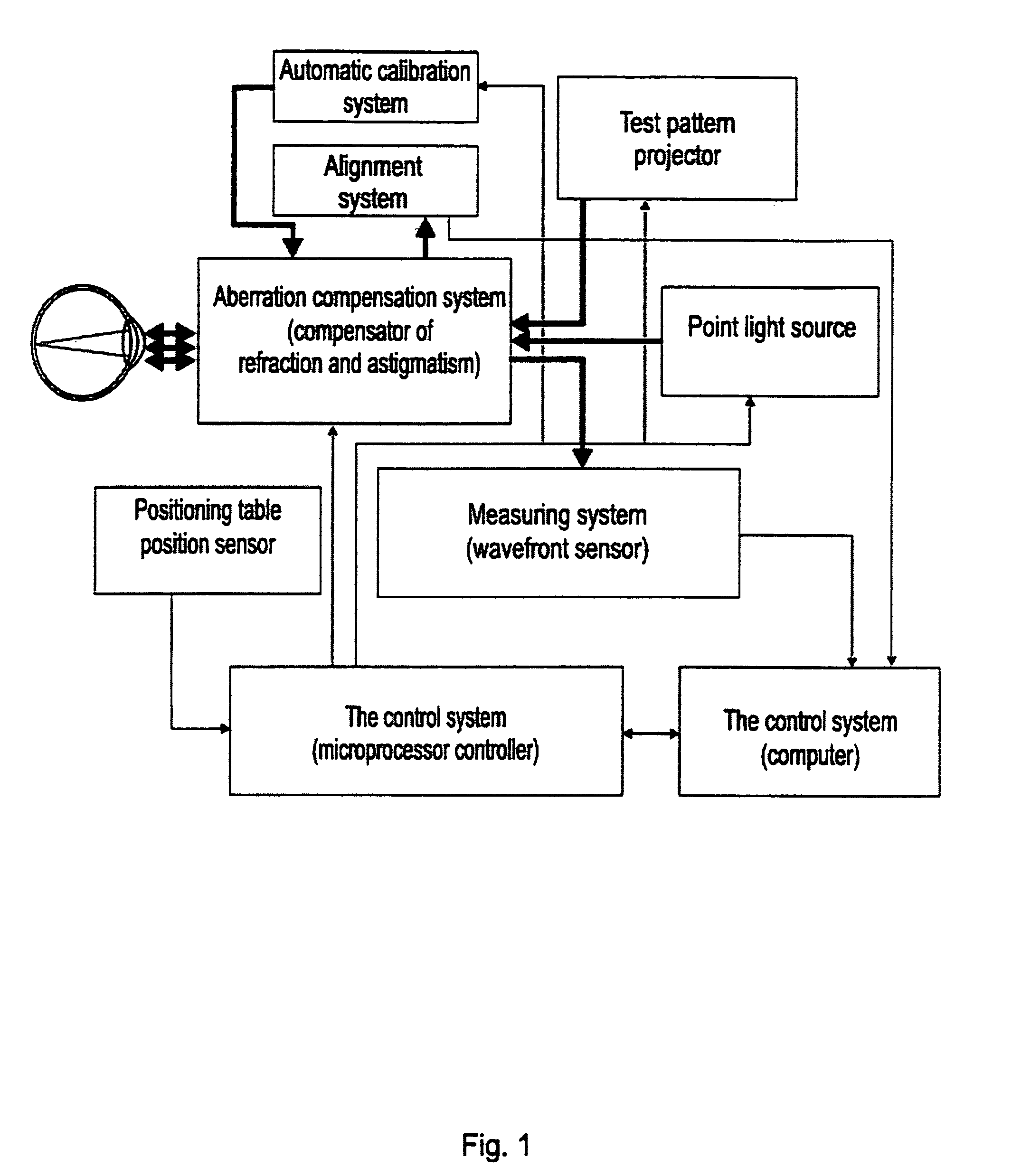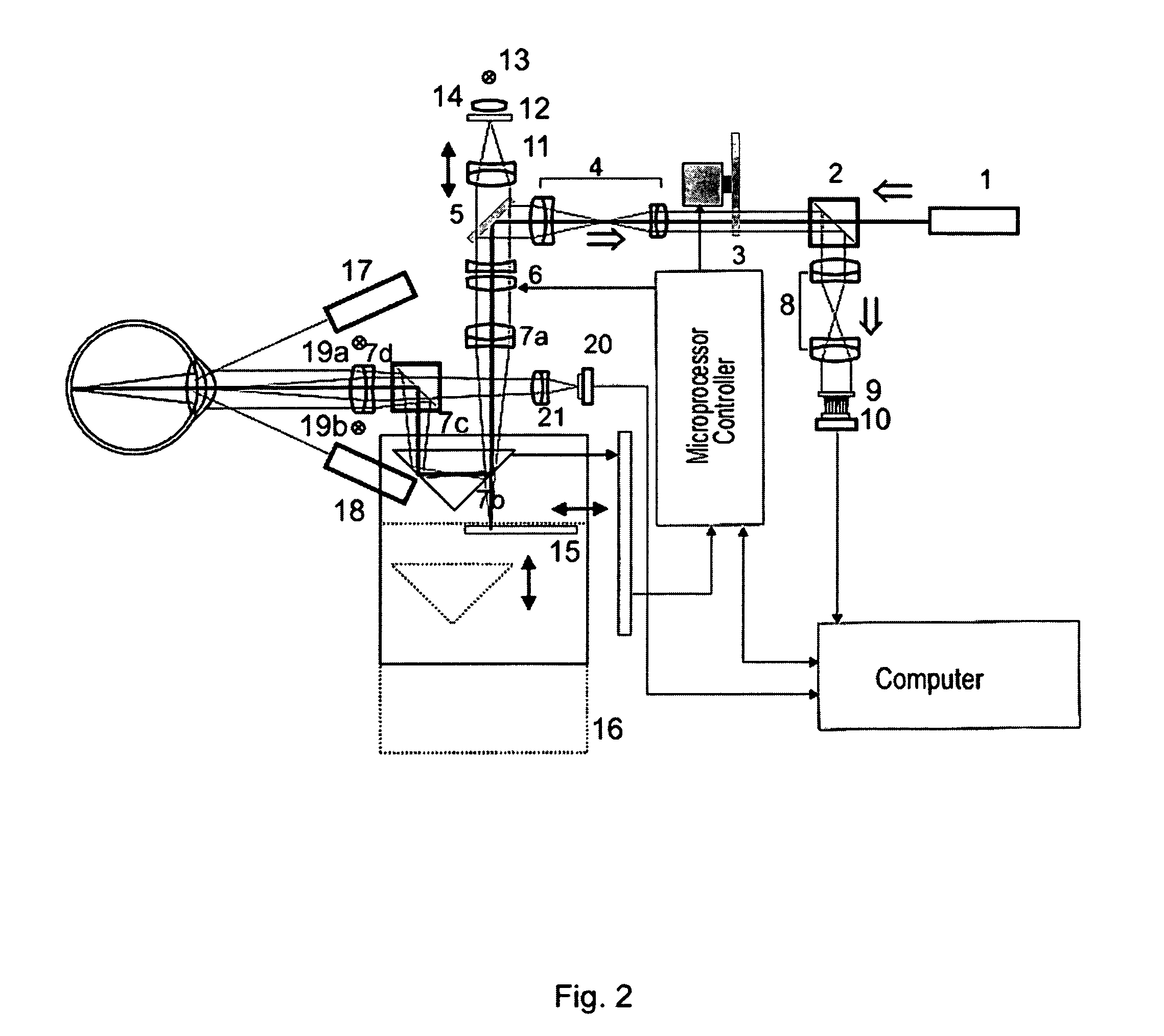Aberrometer provided with a visual acuity testing system
a technology of visual acuity and aberration, applied in the field of aberrometers and ophthalmologic instruments, can solve the problems of inability to achieve the inconvenient adjustment of aberrations, and inability to achieve best ratio between maximal and minimal aberration values, etc., to achieve the effect of improving the functional capabilities of ophthalmologic instruments, increasing the convenience of ophthalmologic instruments, and improving patient comfor
- Summary
- Abstract
- Description
- Claims
- Application Information
AI Technical Summary
Benefits of technology
Problems solved by technology
Method used
Image
Examples
Embodiment Construction
[0088]Below please find information confirming the viability of the group of inventions which are the substance of this application and their ability to function as described.
[0089]The aberrometer with a system for testing visual acuity comprises the following structural units (see FIGS. 1 and 3):[0090]1) a point light source[0091]2) a measuring system based on a wavefront sensor (of the Sack-Hartman type)[0092]3) a system compensating casual aberrations, comprising a refraction and astigmatism compensator and a higher-order aberrations compensator (see FIG. 3)[0093]4) an alignment system (a pointing camera)[0094]5) a projector of test patterns[0095]6) an automatic calibration and self-testing system[0096]7) a control system including a computer and a microprocessor controller
[0097]The ophthalmologic instrument intended for measuring the aberrations of the human eye and testing visual acuity, which is the substance of this application, is built on the basis of Shack-Hartman's wavefr...
PUM
 Login to View More
Login to View More Abstract
Description
Claims
Application Information
 Login to View More
Login to View More - R&D
- Intellectual Property
- Life Sciences
- Materials
- Tech Scout
- Unparalleled Data Quality
- Higher Quality Content
- 60% Fewer Hallucinations
Browse by: Latest US Patents, China's latest patents, Technical Efficacy Thesaurus, Application Domain, Technology Topic, Popular Technical Reports.
© 2025 PatSnap. All rights reserved.Legal|Privacy policy|Modern Slavery Act Transparency Statement|Sitemap|About US| Contact US: help@patsnap.com



